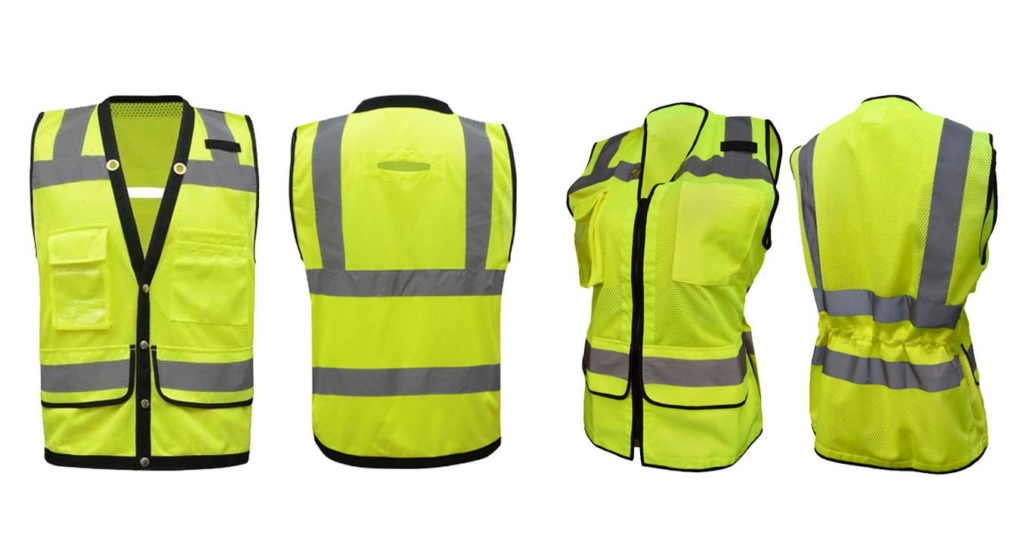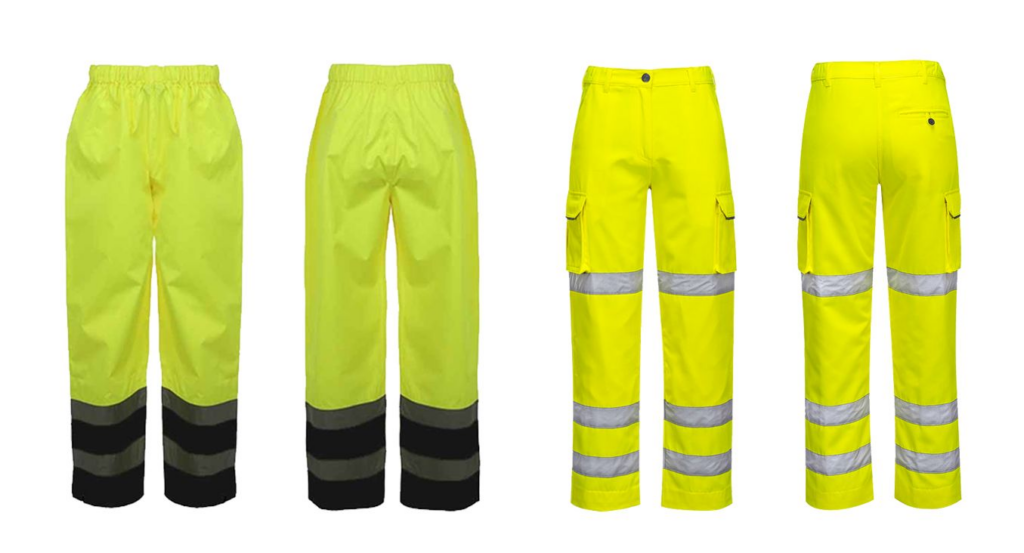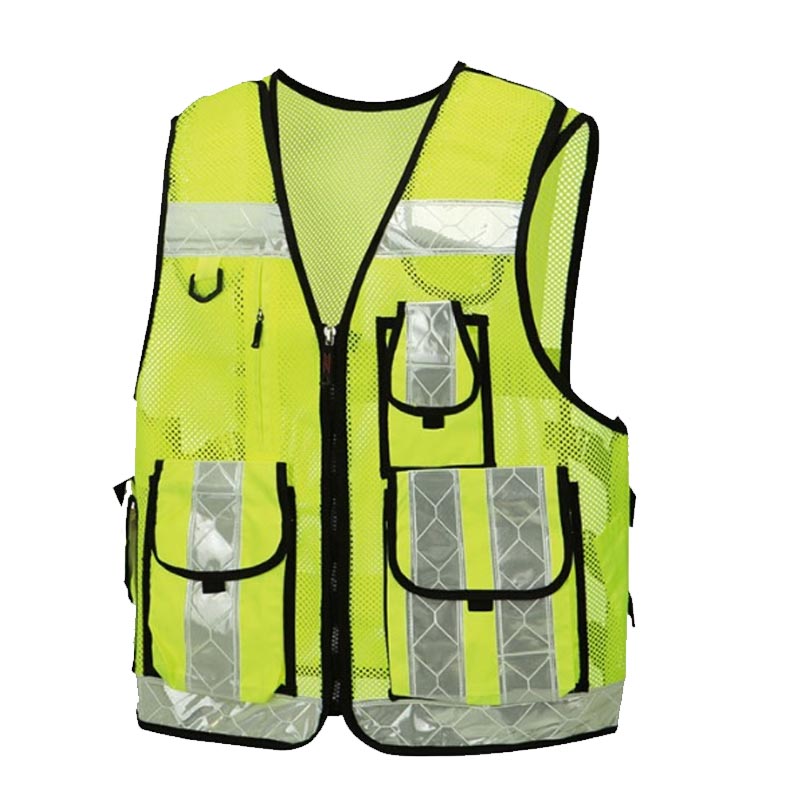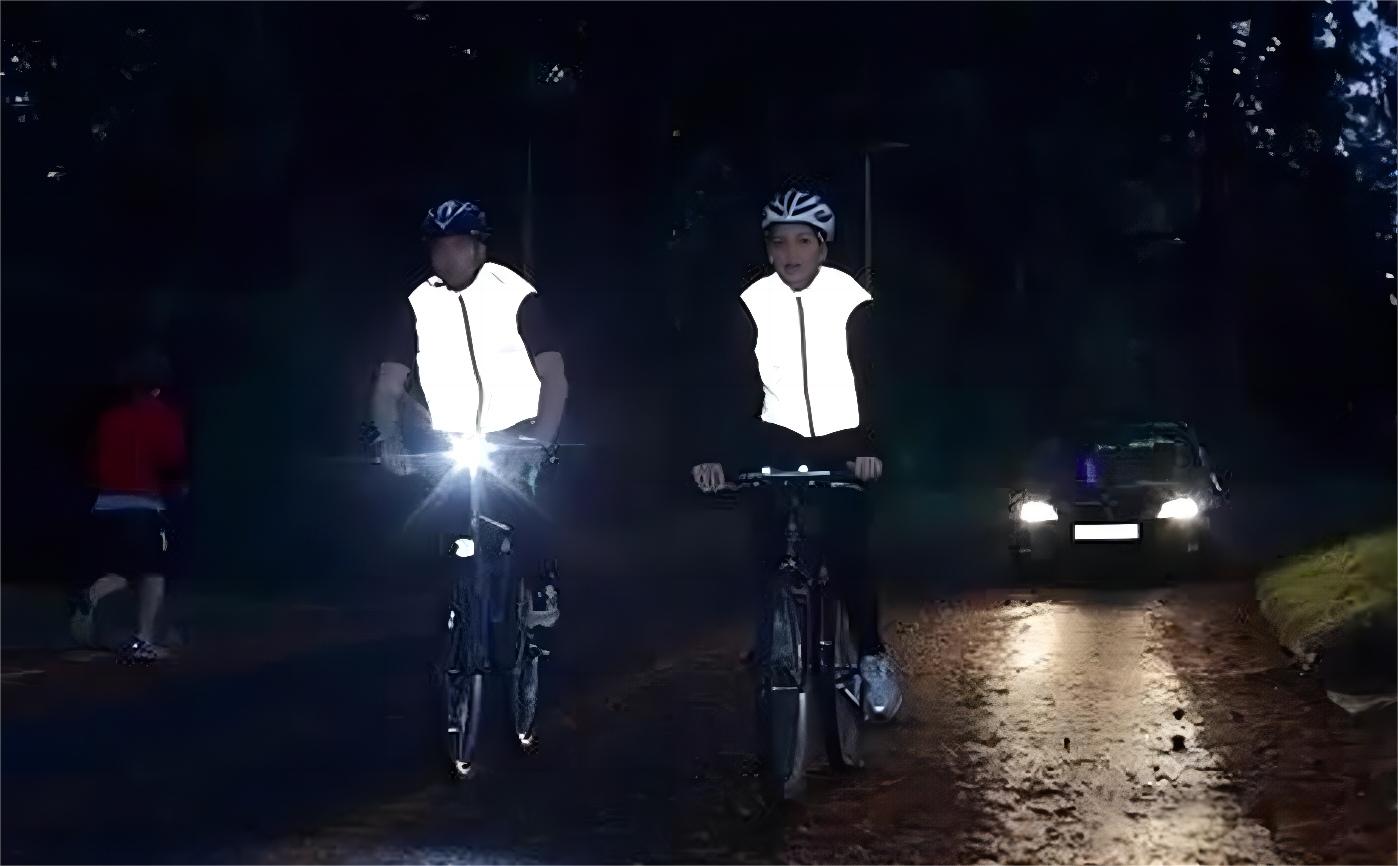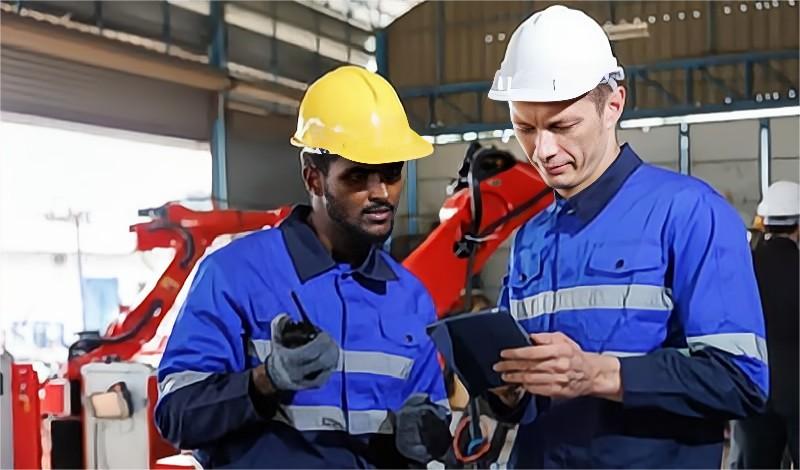High visibility clothing is clothing that stands out from the surrounding environment and is easily seen by other people. This type of clothing is often used by workers in hazardous environments, such as construction workers, police officers, and firefighters. Women’s high visibility clothing is designed to fit the female body and provide the same level of safety as men’s high visibility clothing.
High Visibility Clothing is designed to protect workers; however, incorrect or ill-fitting high-vis clothing or workwear can put the wearer at greater risk. It can be uncomfortable, restrict movement and cause rashes or sores. It can also cause severe injuries from heavy equipment, exposure to burns, cuts from sharp edges, and abrasions from rough material. High Visibility Clothing is among the most commonly used PPE across several industries and is also primarily purchased in either unisex or male sizing. The High Visibility Clothing industry has not yet caught up with the trend that an increasing number of women are moving into more industries.
However, studies show that these high-quality clothes not only protect from injury but can also boost confidence and improve employee morale, “clothes can have profound and systematic psychological and behavioral consequences for their wearers” – The British Psychology Society.
The Market Potential for Women’s High Visibility Clothing
According to the BLS, women make up approximately 47 percent of the total workforce in the United States. The Institute for Women’s Policy Research (IWPR) report says that the number of women working in construction increased by 17.6 percent from 2017 to 2018, reaching well over a quarter of a million (276,000). The overall job growth stood at 3.7 percent in all construction occupations.
In 2018, the percentage of women in the construction industry stood at just 9.9 percent. In 2020, they constituted 10.9 percent of the entire workforce, signifying a steady increase in women’s employment within the past two years.
These figures highlight that the number of women in the construction industry is increasing year over year. Women are also now more open to multiple roles in the industry, ranging from trade jobs to construction management.
Nine percent of all construction firms owned by women achieved over $500,000 or more in revenue. Compared with the rest, only eight percent of firms were able to accomplish the same. These statistics reveal that female leaders help achieve above-average profitability and positively impact profits and collaborations in the building industry.
Why Women’s High Visibility Clothing Is A Must
Women’s body features are not the same as men’s; therefore, clothing designed for men in mind might not be the right or comfortable fit for a woman. In addition to the safety considerations, providing workwear options specifically for women creates a more welcoming environment. It signifies that these essential workers are important and valued in their fields. This can go a long way towards creating a more inclusive and diverse workplace culture.
Improper protective wear can lead to injury or other workplace hazards.
- A safety vest that fits in the waist may not fit correctly across the chest.
- Sleeves are typically longer so unless rolled back they become a catch hazard.
- Longer back lengths of coveralls mean the crotch area of the coverall typically sits a lot lower – down towards the knees making walking and maneuverability very challenging and leg lengths are typically too long and become a trip hazard.

The fit and comfort women’s safety clothing should features as following:
The Features Of Women’s High Visibility Clothing
- Clothing should be easy to put on and take off.
- It should not interfere with the normal movement required for the job. For example, walking, climbing stairs or ladders, sitting, standing, and operating plants or machinery.
- It should not be too loose or baggy. Loose or baggy clothing could get snagged on objects or cause tripping.
- Pants and sleeves should not hang down over hands or feet. Rolled-up sleeves and trousers could get caught in machinery.
- Protective clothing should cover an entire area, even when a worker is moving. For example, if a woman raises their arms or leans over, clothing should not leave parts exposed.
- Head protection should be snug. It should not be able to slide around or tip forward.
- Clothing should not be so tight that it restricts blood flow.
- Clothing should not have sharp edges or rough surfaces that could harm the worker or others near them.
- Where possible, protective clothing should be made of breathable materials to avoid thermal discomfort (workers becoming too hot or sweaty while working).
Guidelines For Purchasing Women’s High Visibility Clothing
As a rule, the bodies of women have entirely different proportions than men. We have naturally smaller frames; wider hips; much larger chests; shorter arms and legs; narrow shoulders; and smaller feet and hands. What this means is that safety clothing designed for men is not actually going to fit you properly.
High Visibility Women’s Safety Vests And Safety T-Shirts
- A proper women’s vest or shirt has an additional room built into the chest area. This extra capacity helps women’s vests or shirts fit comfortably on a variety of different body shapes and sizes.
- Women’s shoulders tend to be narrower than men’s, with almost five inches of difference on average according to some estimates. That means the broader shoulders in men’s vests or shirts don’t fit as well on women — another reason that women need well-made safety vests specifically for their bodies.
- The shape and location of the arm holes on women’s vests or shirts are slightly different from men’s. This might seem small, but it’s important for making sure that the arms of a vest or a shirt fit comfortably.
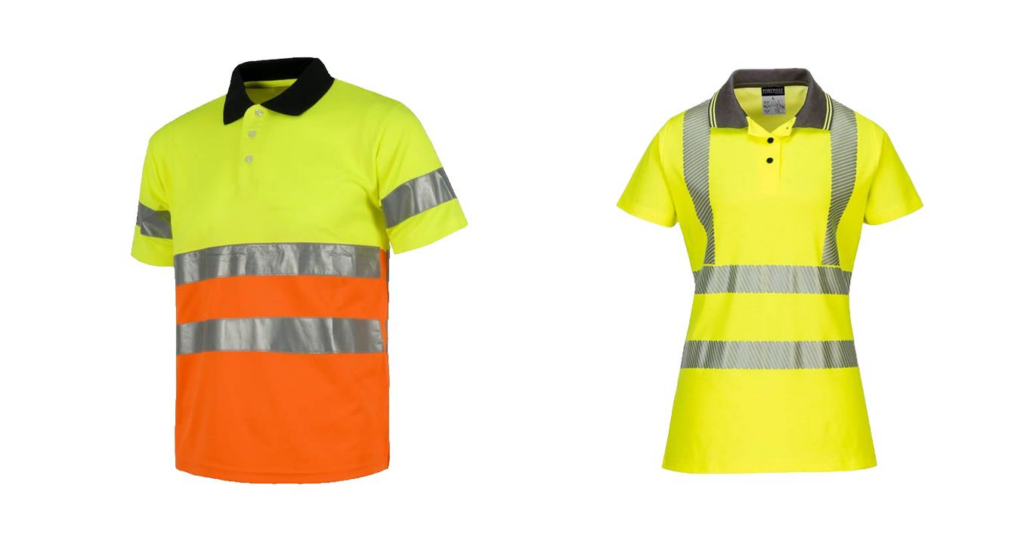
High Visibility Women’s Safety Jackets
- Check how your jacket buttons, if your jacket has any on it. Put the jacket on if you can, button it up and pay attention to which side you button on. Men’s jackets typically will button on the left side of the torso, while women’s jackets will button on the right torso.
- Examine how the jacket is tailored. Men’s jackets usually have elongated torsos and more width in the shoulder area. Women’s jackets, on the other hand, are slimmer, and usually more tailored at the waist with more fabric in the breast area to accommodate the curvier figure of a woman.
- Have a male and female both try on the jacket to help your find out. If the jacket has sagging fabric in the upper front torso or the male can’t even get it over his shoulders it is probably meant for a female. Conversely, if it seems much too wide across the female’s shoulders or gives her figure a boxlike shape, it is most likely a men’s jacket.

High Visibility Women’s Pants
- Check the sewing of the hips. Depending on the hip size of a woman, trousers and pants and cut, shaped, and sewn to fit the size and the wearer, there is every tendency that if a lady with a different hip size, but the same waist size wears that trouser, it won’t fit. Men don’t have this issue.
- Women’s hips tend to have more curvature than men’s hips, and proper women’s workwear is built to accommodate this. A pair of women’s coveralls or work pants will usually have wider hips that taper slightly toward the waist to help them fit more naturally.
High Visibility Women’s Coveralls
- For a safer and more tailored fit, the women’s coveralls are equipped with snaps at the wrists and an adjustable waist to ensure the garment does not hang or get caught in equipment.
- Women’s coverall rear opening functions with the two-way main zipper to improve the toilet use experience. Making bathroom breaks significantly quicker and easier for women.

The Key Size Measurement And How To Measure Women’s High Visibility Clothing
The most common measurements for women’s clothing are bust, waist, hip, and shoulder width measurements. We’ll take each of these in turn.
Bust
To measure a woman’s chest, wrap the tape beneath her armpits, fully encircling her body around her shoulder plates and the fullest part of her bust. For best results, she should wear a non-padded bra and relax her arms at her sides. Make sure not to cinch the tape so tight that it compresses the bust.
Waist
A woman’s natural waistline is typically the narrowest part of her torso, an inch or two above her belly button. To measure the waist, encircle it with the tailor’s tape and measure the entire circumference.
Hip
The hip should be measured around the widest part of the hip and buttock, about eight inches below the waist. This is another circumferential measurement, which means you’ll want to encircle the body with the tape.
Shoulder Width
This measurement will require a partner. If you don’t have a partner, measure a shirt directly. Either way, it’s helpful to refer to a shirt that fits well on the shoulders. Start the end of the tape on the outside edge of the shoulder where you want the yoke of the shirt to start. This is where the horizontal part of the shoulder meets the vertical part of the arm. Measure up over the curve of the shoulders and to the outside edge of the other shoulder.

Why is Women’s High Visibility Clothing Sometimes insufficient?
The truth is that a lot of the women’s High Visibility Clothing doesn’t work well. The biggest reason is that many manufacturers don’t really care about great products for women, they go for the easiest option of making the women’s High Visibility Clothing smaller and in “girly” colors, ending up with ugly and uncomfortable women’s workwear.
A great women’s high-visibility clothing should be created specifically for women, embracing the real must-haves for today’s working woman: PROPER FIT, COMFORT, AND FUNCTIONALITY.


